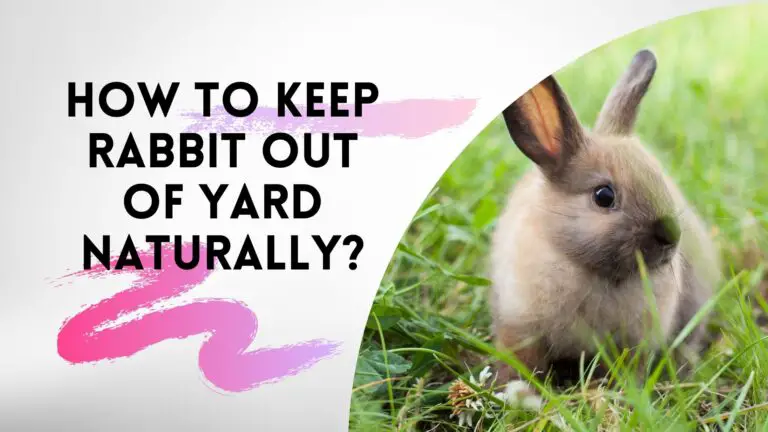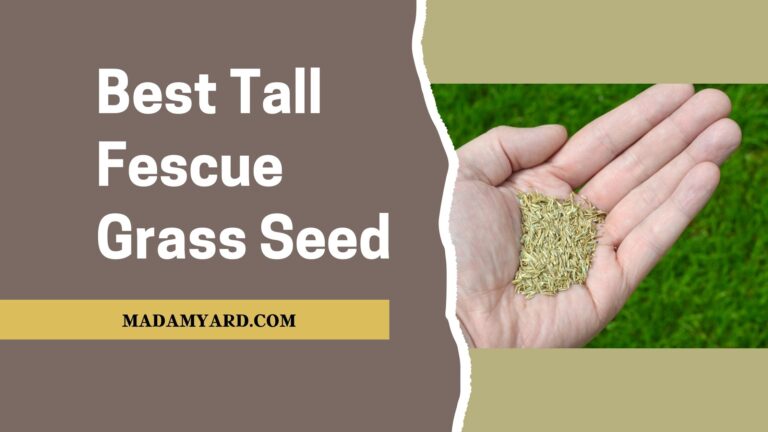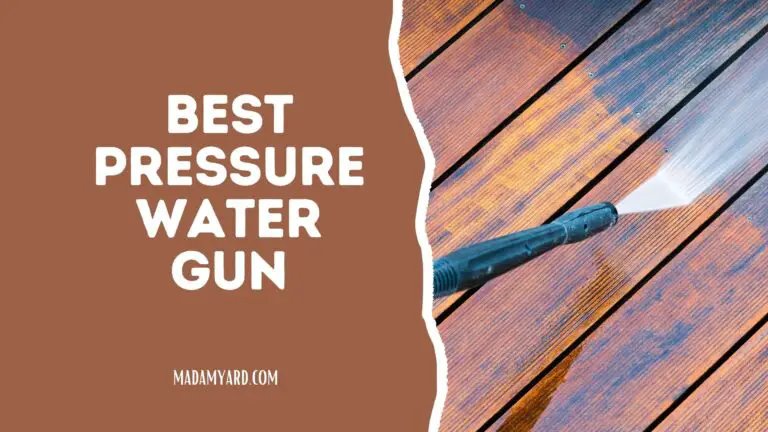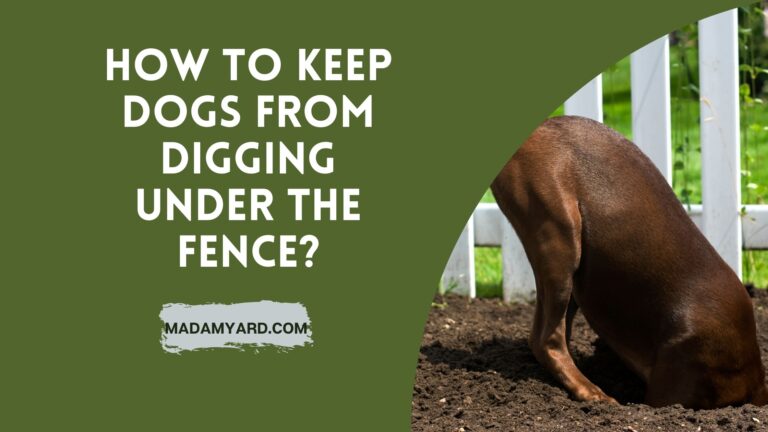How To Fix Yellowing Grass? (Fast & Easy Tips)
You may be asking how to fix yellowing grass? It’s all too tempting to assume that lawn illnesses are to blame for your yellowing grass. That is true in some circumstances, but incorrect lawn care methods cause yellowing in others.
Your grass turning bright yellow in tiny places might be due to many factors. Frost burn is the most prevalent cause of yellowing tips, although dog urine, over-fertilization, and overwatering can all cause them.
Let’s take a closer look at these to know how to fix yellowing grass?
Is Yellow Grass Dying?
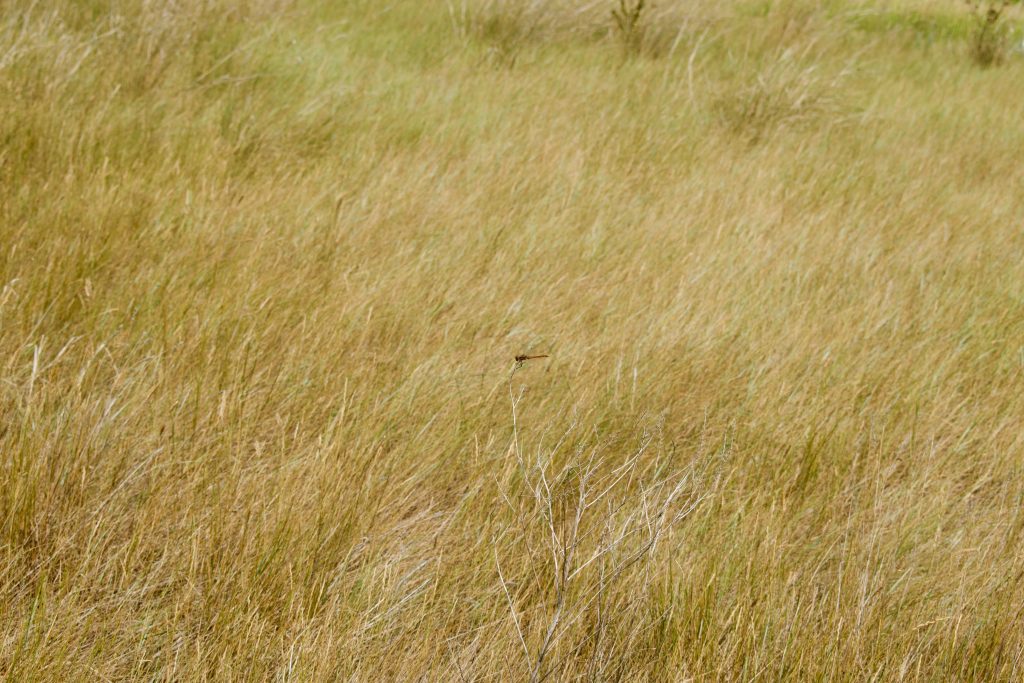
Yellow grass isn’t always a clue that it’s dying. If the underlying problem, such as overwatering, underwatering, or fertilizer burn, is addressed, grass can recover and thrive. To help yellow grass fix fast from drought, water the lawn as deeply as possible as soon as feasible.
If excess nitrogen salts are not drained out of the soil quickly enough, wilting and dying turfgrass from fertilizer burn can also die quickly. Similarly, pests and illnesses can damage the grass if not handled early enough.
How Do I Fix A Yellow Lawn?
Yellow spots can sometimes signify sickness, and many fungal diseases can generate yellow spots. Remove part of the yellow grass to see if you can find anything that resembles a fungus. To destroy the bacteria and restore the health of your grass, apply fungicide to the affected area very away.
You can do a few measures to prevent fungal growth from turning your grass yellow. To maintain your lawn healthy and free of fungus, dethatch it and aerate it.
If you notice any fungus in your grass, you should dethatch and aerate the entire area because you’re past due for this care. Over time, all grasses grow thatch, and this dense undergrowth might prevent water from reaching your soil. This growth can be removed with dethatching rakes.
The fungus prefers damp environments and grows where water gathers and does not drain properly. Improve your lawn’s drainage by aerating the soil in areas where water collects.
Water early in the morning rather than later in the day to avoid standing water on your lawn overnight. Keep your grass clean of clippings, leaves, and sticks to avoid moisture trapping.
Why Does My Grass Turn Yellow?
Grass can become yellow or discolor over the summer and winter months, even if it is still young sod. There are a variety of causes, some of which are weather-related. In other circumstances, your dog may urinate on the grass, causing it to burn into spots.
The following are some of the reasons why your grass has turned yellow:
1. Deficiency In Nutrients
On the other hand, a shortage of nutrients might lead a grass to yellow. Because these nutrients require chlorophyll synthesis, a lawn deficient in nitrogen or iron will become yellow.
Whether you feel a nutrient deficit is to blame for your lawn’s poor appearance, a soil test may be worth ordering to verify if your assumptions are correct.
You can either use a soil laboratory for a more extensive result or buy a do-it-yourself soil test from a nursery, which should be able to test the pH level of your soil and verify for the presence of a variety of nutrients. Fertilizers and plant food can be used to assist in restoring the health of your lawn if it turns out that it is deficient in one or more nutrients.
While seeing yellowing grass can be discouraging, there are ways to address the problem.
Yellow lawns don’t always have to be the end of your turf, whether it’s due to drought restrictions being lifted and more rain falling, or it’s due to nutrient levels in the ground. Your lawn may transform with a little research and perseverance.
2. Excess Nitrogen
An excessive amount of fertilizer might cause your garden to burn, and it is especially true in the case of synthetic fertilizers. Your grass will become yellow once you’ve applied fertilizer, indicating that you’ve done so.
Excess nitrogen salts in designed fertilizers frequently burn your turfgrass’ clears. It is sometimes referred to as leaf burn.
Most homeowners over-fertilize their lawns in an attempt to get a lush, deep green lawn. If you’re attempting to do so, use a natural fertilizer that won’t burn your gardens, such as Milorganite or its substitutes.
The grass blades’ tips are becoming brown. Grass grows at a leisurely pace. Outside, fertilizer is put on the soil surface.
3. Overwatering
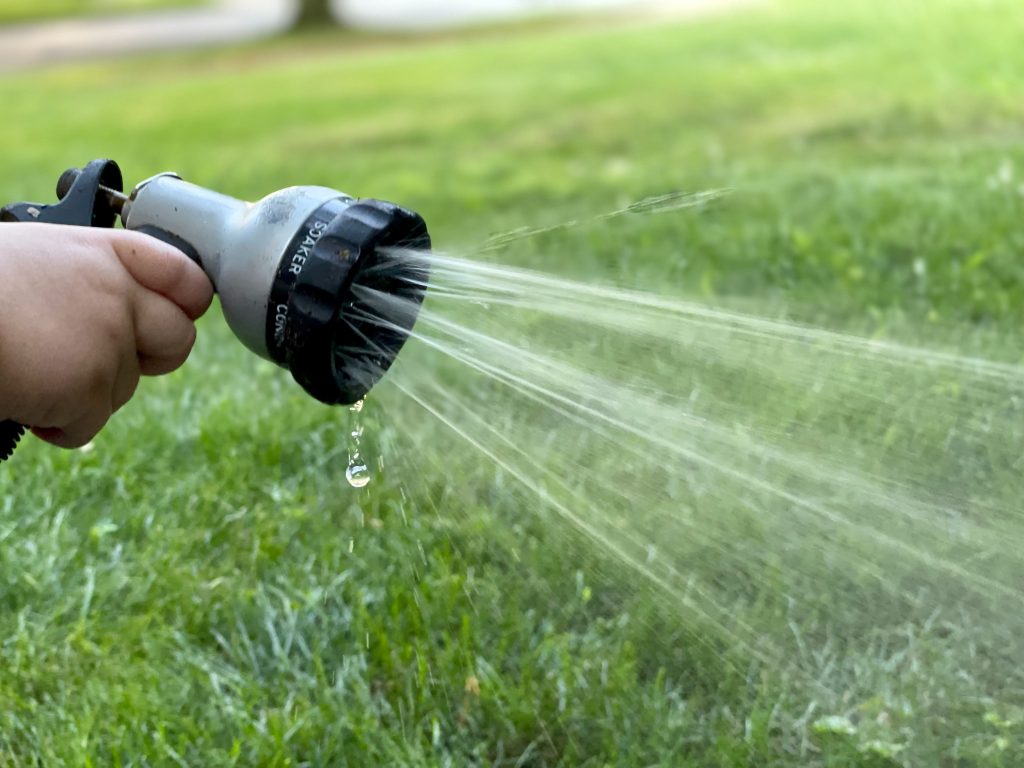
A lawn that receives little water is susceptible to illness and susceptible to the problem. However, it may have an impact on root development.
Because the soggy soil prevents oxygen and other nutrients from reaching the roots, overwatered grass tends to turn yellow. As a result, your lawn’s roots will not grow deep into the earth, leaving it vulnerable to damage.
You should only water when you notice the uppermost layer of soil is dry. Watering in the morning is the best time of day since it allows the water to soak in and the yellow grass blades in the lawn to dry in the sunlight.
In an ideal situation, maximum grass can be manipulated with just one inch of water every week, and it is preferable to water your grass seldom and deeply.
Some grasses are more drought-resistant than others and can survive significantly less water.
Also, remember to pay attention to the soil in your yard. Grass planted in heavy soil requires less water than grass plants on sandy soil.
4. Fertilizer Burn
Excess salts introduced by too much fertilizer on your lawn end up scorching the grass and turning it yellow. The turfgrass is most likely discoloring since you recently applied a synthetic fertilizer.
The following are indicators of fertilizer burn:
- Excess nitrogen salts cause leaf scorch
- Grass tips turn brown
- Fertilizer crusts on the grass
Excess salts can flush out of yellowing grass with irrigation. Apply an excellent organic slow-release fertilizer like Milorganite if you want your grass to grow thicker and green up faster.
5. Heat Stress
In the summer, when temperatures are high, heat stress is frequent. Your grass may suffer from drought stress and begin to turn yellow if it is not adequately irrigated.
If a suitable watering schedule is not maintained, certain kinds of St. Augustine grass are drought tolerant and can readily exhibit indications of drought stress.
Grass needs water to thrive. Hot temperatures and locations exposed to the sun all day may quickly dehydrate and dry up the lawn, resulting in yellow-brown discoloration.
The following are some of the other consequences of high temperatures on turfgrass:
- Drying and withering grass
- Drying and withering grass
- Wilting grass
- Soil compaction
- Limited water intake
Because the roots aren’t deep enough to absorb the little liquid left deep in the soil, drought and heat stress exacerbate in freshly formed sod.
Watering deeply can help revive and repair grass that has turned yellow from heat stress. However, if the lawn exposes to excessive heat for an extended time, it will be difficult to resurrect the dying grass.
6. Lawn Illness
Lawn disease is another possible cause of yellowing grass. Fortunately, while grass diseases are common, they are simple to identify.
The worst are lawn diseases, which can harm both cool- and warm-season grasses.
Even the most well-kept lawns are not immune to attack. It is because disease-causing fungi are always hiding in the soil, waiting for the right moment and circumstances to strike!
Learn to detect the indications of lawn illnesses so you can avoid and cure them before they cause unthinkable damage to your lawn.
7. Grass Rust
Grass rust, often known as rust disease, is a thin material that appears in places or completely coats a grass edge and is readily brushed off.
Garden rust is a strange grass illness easily seen when the individual grass margins are examined up close.
The many species of grass rust organisms cause the orange or rust-colored fruiting bodies that inevitably appear on grass edges. It provides a distinction between it and other garden illnesses.
Garden rust spreads quickly when it is in good shape, thanks to the wind, grass edges brushing against one another, and people and animals are walking through it.
Shade, warmth, and stickiness are all characteristics of lawn rust. It also thrives in nitrogen-rich soils, distinguishing it from other grass diseases.
Grass rust appears as little yellow dots on grass margins at the beginning of its spread, and it appears as a random bright spot in a yard of regular grass from a distance.
The specks protract and eventually break as the sickness progresses, resulting in the rust-colored tufts of good accumulation that give the condition its name.
Less severe contaminations induce discoloration and a slower pace of expansion. Serious grass rust contaminations color the whole lengths of grass margins, causing the grass to seem torn and tip downwards rather than erect.
While the grass is infected, any amount of the illness might make it more susceptible to other grass diseases.
8. Animal Urine
Have you exhausted all other possibilities? Perhaps the yellow lawn is the result of a neighbor’s dog.
Many animals’ urine contains a high concentration of nitrogen, which can burn your lawn if concentrated in one location. To avoid your lawn from burning, either train your pet to go somewhere else or quickly spray down damaged areas to help dilute the urine.
If your grass has already been damaged by animal urine, consider overseeding the affected areas:
- Remove any matted, dead grass from the area
- Poke a few shallow holes in the soil using a small gardening instrument
- Sprinkle a fair amount of grass seed over the entire area
How To Fix Yellowing Grass Fast?
In most circumstances, you can turn yellow grass green quickly and enjoy a beautiful lawn once more.
All you need to do is arm yourself with the necessary information about the problem’s origin and potential remedies, and presto! Your grass is once again green.
Here’s how to fix yellowing grass green quickly now that you know why it’s yellowing:
1. Flush Out Excess Fertilizer
Fertilizer burn appears when grass blades become yellow, and crusts of synthetic fertilizer emerge on the lawn. Flush out the surplus salts past the root zone to solve the problem.
To wash down the surplus salts and force them to drain into the soil beyond the root zone, rinse the grass with at least 1 inch of water per day for 4-7 days. Begin applying this remedy as soon as your grass begins to turn yellow or brown.
Soaking the lawn for a week in a large amount of water can help revitalize the grass and turn it green again. If you start the treatment early enough, you can salvage a lawn withering from fertilizer burn.
2. Thoroughly Water The Lawn
A lawn that is withering and turning yellow due to a lack of water will swiftly turn brown as the grass dies. If water is the issue, you should evaluate your watering schedule to correct the problem.
Deeply water the grass 1-2 times each week to keep the soil wet, even during the warmest parts of the day. Irrigate with 1.5-2.5 inches of water if the lawn is developed on fast-draining sandy soils to keep the grass green.
3. Use A Neutralizer For Dog Urine
When your dog pees, it includes a lot of nitrogen, which causes the grass to burn. Follow these steps to remove yellow streaks produced by dog urine:
- As soon as your dog pees on the lawn, use a dog urine neutralizer.
- Dig up the dead grass in specific areas and reseed to encourage new grass growth.
- Teach your dog to pee in areas of your yard where there is no grass.
Following and training your dog in the yard can be difficult, but it will keep your lawn from fading. Train your dog to go to a specific area of the garden, preferably one that is grass-free.
Dog urine marks don’t always grow back, especially if you wait too long before using a dog urine neutralizer. If the grass is already dead, use a rake to remove the areas before reseeding your lawn.
4. Take A Supplement Of Iron
A low pH in the soil causes iron chlorosis, and thus, addressing this is the first step in resolving the yellow grass. Begin by testing the pH of the soil to ensure that it is appropriate for the turfgrass variety you are planting.
Apply an iron-rich fertilizer like Milorganite after correcting the soil pH if the yellowing was not caused by overfertilization.
Apply an iron supplement for lawns, such as Ironite, if your grass is properly nourished yet displaying indications of iron insufficiency. It will help your grass develop into a thick, healthy turf and restore its color to a rich green.
5. Fix Drought Stress In Summer
Here’s how to keep your grass from turning yellow in the heat:
Every week, water the yard well. Irrigate early in the morning to allow the water to dry and avoid fungus over the day. The kind of soil also influences how quickly water drains.
Grass growing in sandy soil, for example, requires more watering. Because you’ll be soaking roughly 4-6 inches of topsoil, make sure you measure how much water you’re applying to your lawn to avoid overwatering, which can cause the grass to turn yellow.
You can use lawn aerators to break up the packed soil. They range from spiked shoes for small lawns to gas-powered lawn aerators for larger yards. They’re also made to poke holes in the ground to allow water to infiltrate.
However, don’t overwater your grass, as this may cause it to become soggy and muddy. When it’s hot, once or twice a week should enough, but only water your plants when necessary.
Treat pests, and diseases pests such as chinch bugs and grubs can harm your lawn, causing browning of the leaves and even dead brown areas of grass. Fungal infections have also been connected to the yellowing and greying of grass blades at the base of the shoots.
Apply a lawn fungicide like Scotts DiseaseX to turn yellowing grass to green quickly. Most fungal infections that cause leaf yellowing and root rot will be eradicated with this treatment.
Use a grub killer in the early spring to prevent grub larvae from feeding on the yellow grassroots.
6. Feed The Lawn With Slow-Release Fertilizer
Most turfgrasses require around 1 pound of nitrogen per 1000 square feet to keep healthy and combat weeds, diseases, and pests. A good fertilization program should turn the grass green again if it is yellow due to a lack of nitrogen.
Apply a slow-release organic nitrogen fertilizer to the grass regularly for 2-3 months. Organic fertilizers are less likely to burn grass and produce yellowing, and a fading lawn will turn green within 1-2 weeks after applying one.
Conclusion
As the warm weather continues, many of us are finding ourselves spending more time in the garden. However, the hot weather isn’t all good news, as many gardeners are becoming concerned about the quality of their lawns.
Some people notice that their grass is turning unappealing and yellow, rather than the wonderful green it used to be. And it’s possible that the heat isn’t to blame. So here are some of the things that might harm your grass — and how to fix yellowing grass so you can get the most out of your plant this summer.

